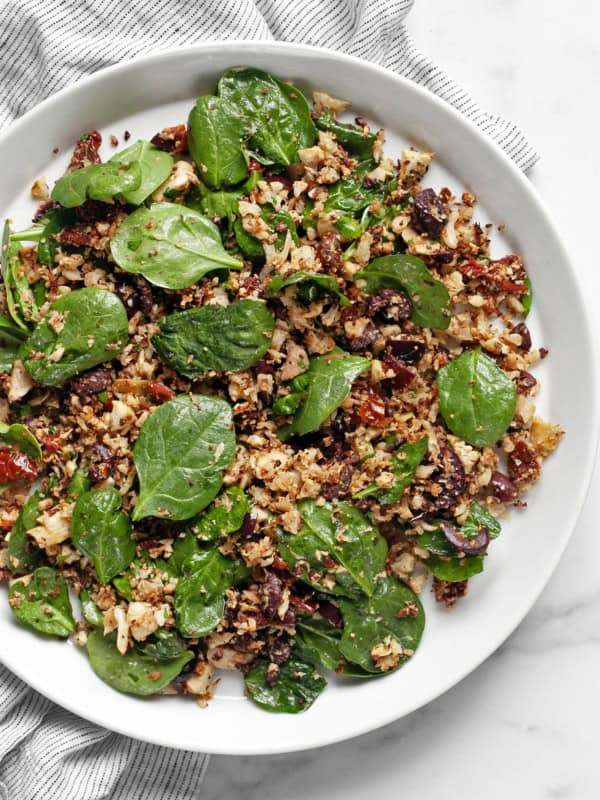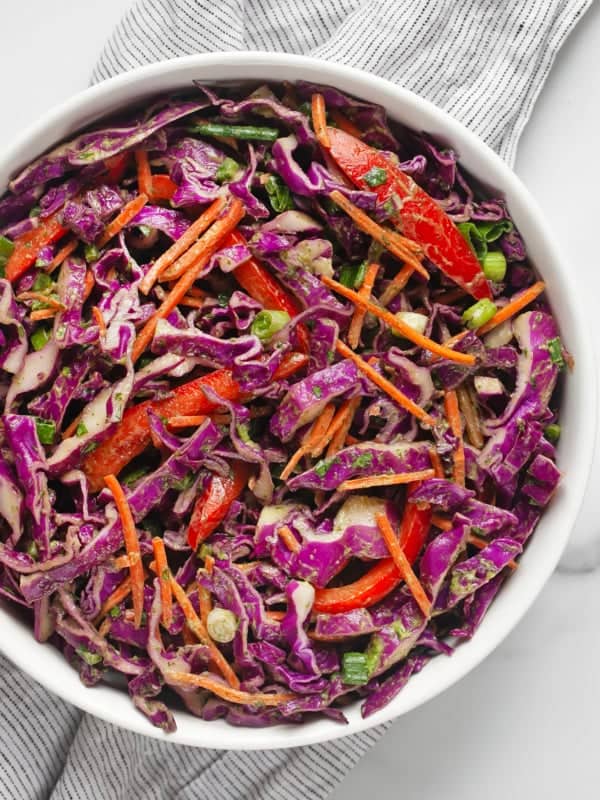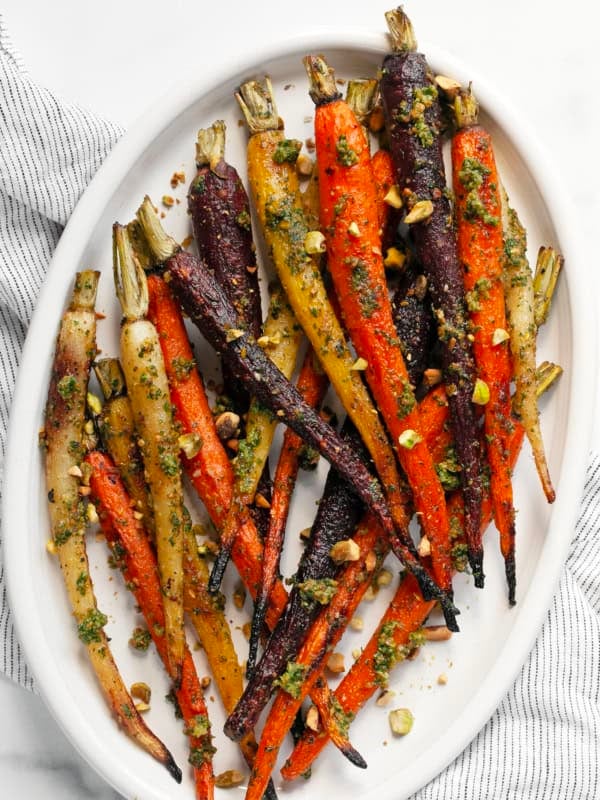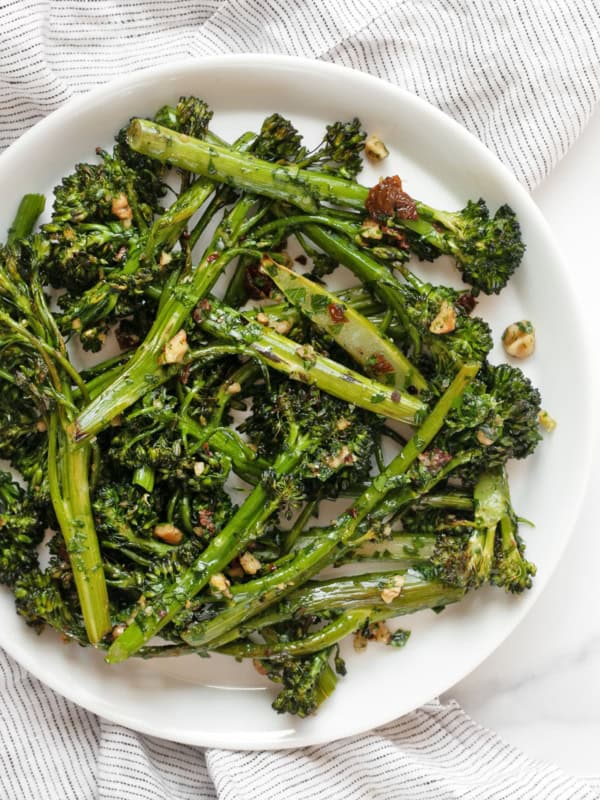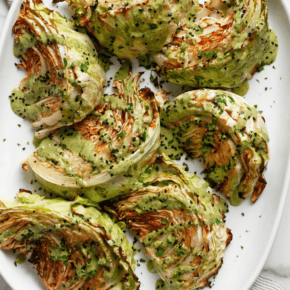Roasted Cabbage Wedges
on Jan 07, 2025
This post may contain affiliate links. Please read our disclosure policy.
These roasted cabbage wedges are an easy vegan side dish that you can also serve as a main dish with lentils or grains. While the cabbage roasts in the oven, you make a quick no-cook tahini sauce with scallions and fresh herbs for the perfect finishing drizzle. This is a simple vegetable recipe that takes just 30 minutes to make.
Also try this balsamic roasted red cabbage recipe.
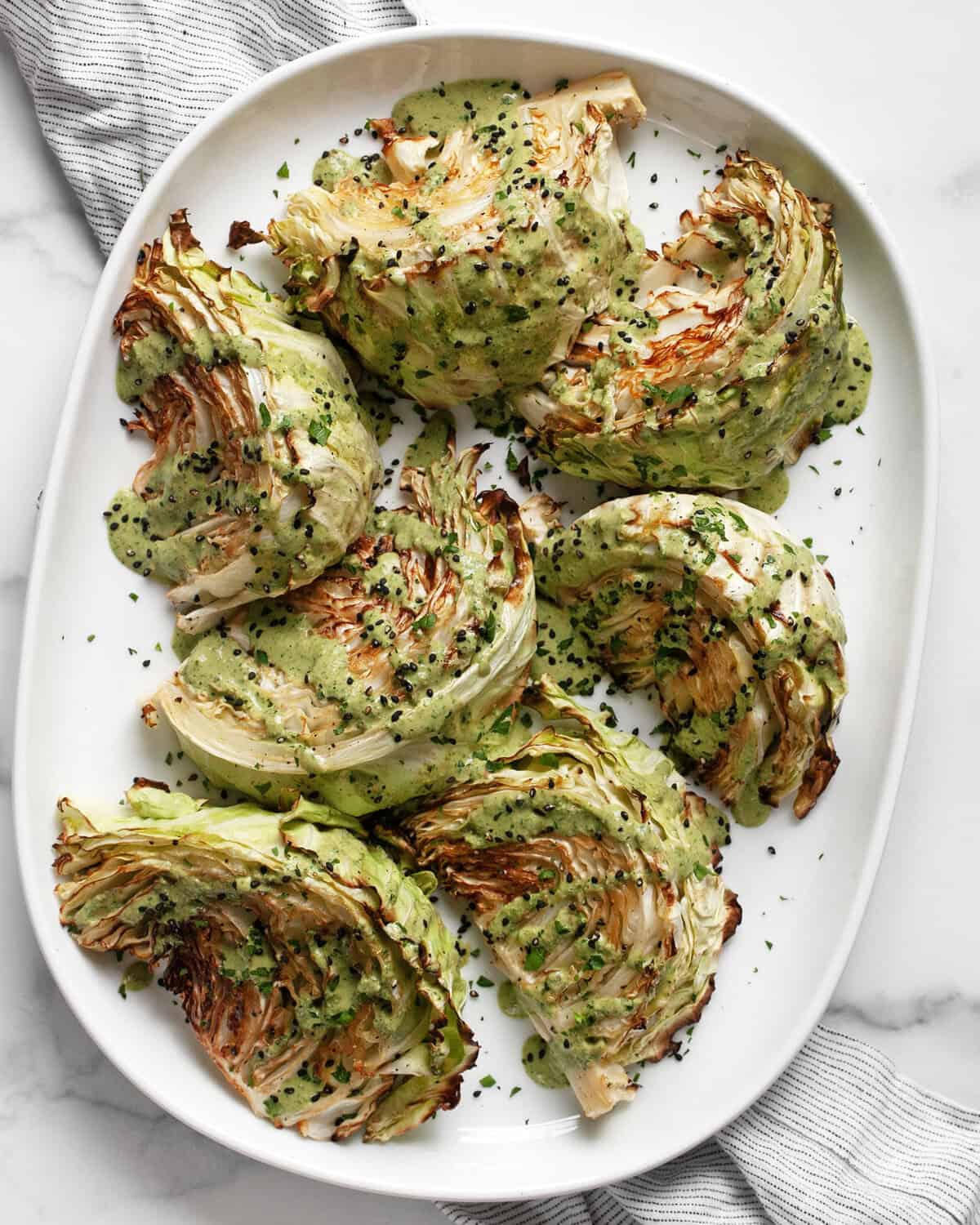
Table of Contents
Why You’ll Love This Recipe
If cabbage is not a veggie that you usually get excited about, try roasting it. In the oven, the outer edges of the leaves crisp up a bit. The sides that touch the pan caramelize while the leaves soften, but still keep some of their bite. It has so much good nutty flavor.
Cabbage is a budget friendly and nutritious fall-winter vegetable that you can find year round. When you cut into a head of cabbage, you can see how dense the leaves are right away. It is a cruciferous vegetable that has lots of vitamins and antioxidants and is low carb and low in calories.
The tahini sauce is easy to make and fantastic. There are countless reasons why you should keep a jar of tahini in your kitchen at all times. Here I blend it with scallions, herbs, garlic and fresh lemon juice to make a tasty sauce to spoon over the roasted cabbage wedges.
The Ingredients
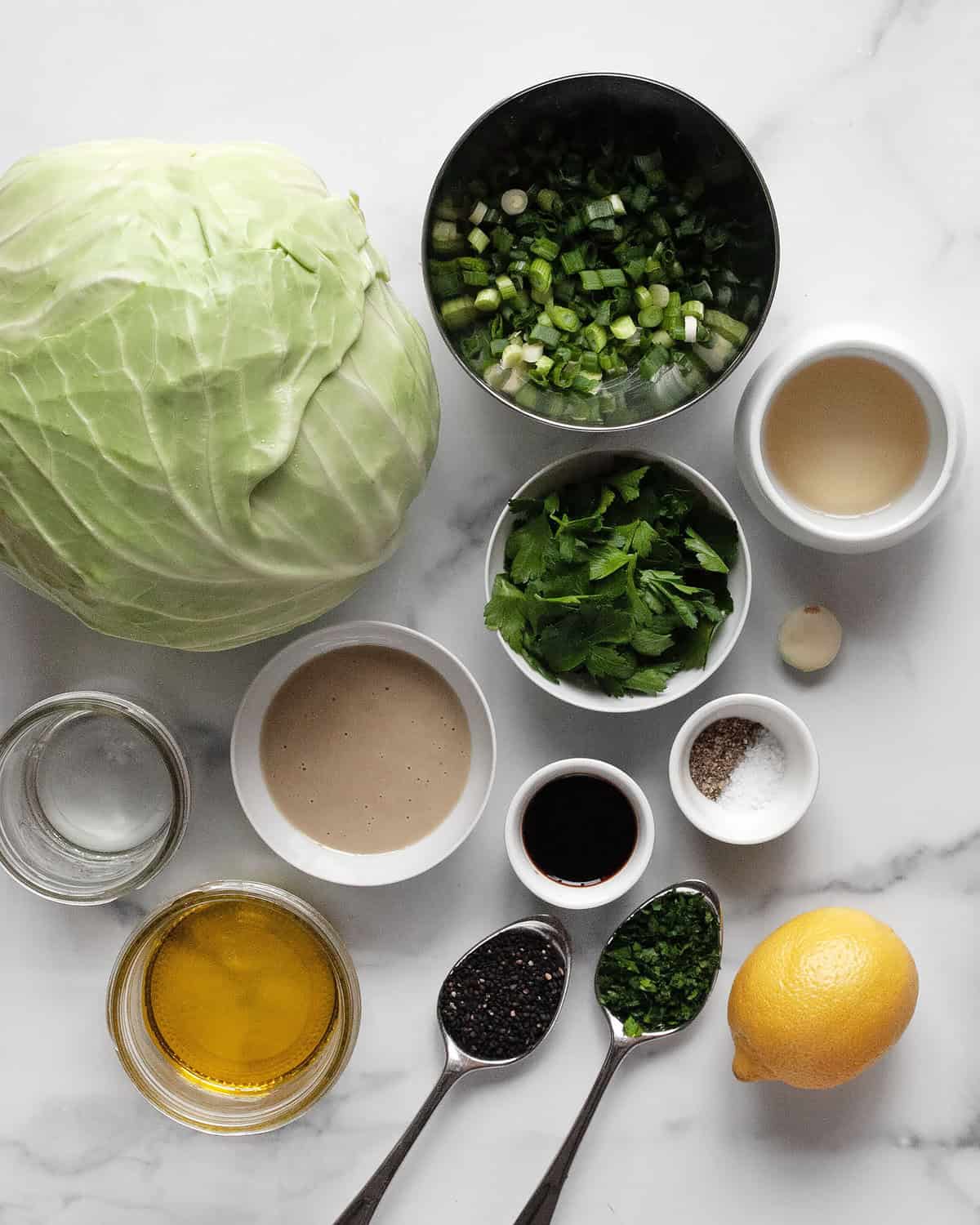
This is what you need:
For cabbage:
- Cabbage: Look for a green cabbage that feels heavy for its size. You should pull off the wilted outer leaves before cutting it into 8 wedges. It’s fine to substitute with red cabbage.
- Olive oil: I whisk oil and vinegar together and then brush that all over the cabbage to add flavor to prevent it from sticking to the pan. You will also use oil to light grease the baking sheet.
- Rice vinegar has good acidity and is made from fermented rice. It makes sense with the other ingredients in the sauce. If you don’t want to buy a bottle of rice vinegar, you can substitute with white wine vinegar.
- Kosher salt and black pepper: After brushing the cabbage with the oil-vinegar mixture, I season it with salt and pepper.
- Sesame seeds: I sprinkle the roasted cabbage with sesame seeds before serving it for a touch of nutty crunch. You can use black or white sesame seeds.
For sauce:
- Tahini is sesame seed paste. You can find it in the global food aisle at the grocery store. Soom Tahini is one of my go-to brands. You should store an open jar in the fridge. I like to take it out 15 minutes before I am planning to use it and then give it a good stir in case the sesame oil has separated from the rest of the tahini.
- Scallions add mild green onion flavor to the sauce.
- Parsley: Pull the leaves off the stems, so you are just pureeing them with everything else. I also finish the roasted cabbage with chopped parsley.
- Garlic: The recipe calls for 1 garlic clove.
- Lemon: Squeezing in fresh lemon juice adds brightness, but I wouldn’t say the sauce ends up with a lemon-forward taste.
- Soy sauce: Use low-sodium soy sauce, so it’s not too salty. Keep in mind that soy sauce contains wheat, so it’s not gluten free. Substitute with tamari and read the label to make sure that the specific brand has no wheat.
- Water thins out the sauce slightly, so it is pourable, but not runny.
- Kosher salt and black pepper: I like to think of these seasonings as an on-switch for the flavors of the rest of the sauce ingredients.
How To Make Roasted Cabbage Wedges
Preheat the oven to 400 degrees F. Lightly grease a sheet pan with oil.
1. Cut the cabbage. Tear off the wilted outer leaves. With the cabbage stem side down, cut it in half with a sharp chef’s knife. Then slice those halves into 4 wedges each, so you end up with a total of 8 wedges.
2. Prep the cabbage for roasting. In a small bowl, whisk the olive oil and rice vinegar. Arrange the wedges on the prepared baking sheet without touching or overlapping. Brush them all over with the oil-vinegar mixture. You can use a pastry brush or a silicone brush. Then season them with salt and pepper.
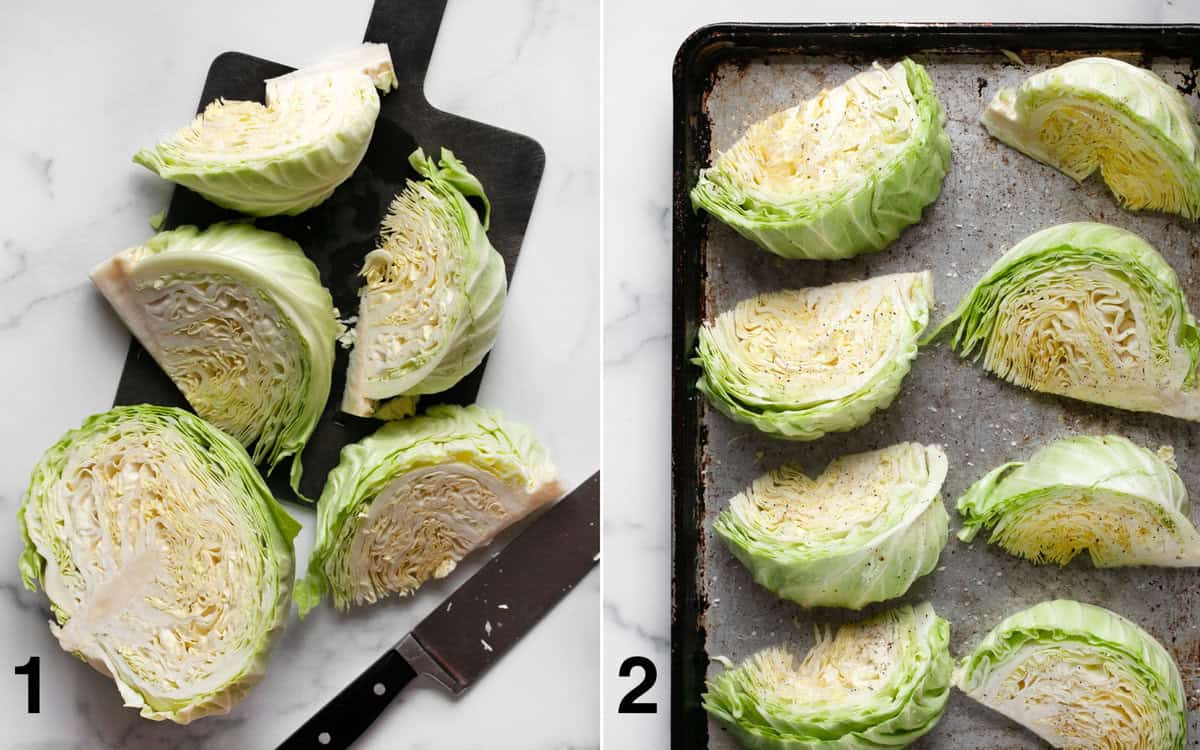
3. Roast the cabbage. Give it 20-25 minutes until browned and caramelized at the edges, flipping over halfway through roasting.
4. Combine the tahini sauce ingredients in a food processor or blender. That includes the garlic, tahini, parsley, scallions, soy sauce, lemon juice, salt, pepper and water.
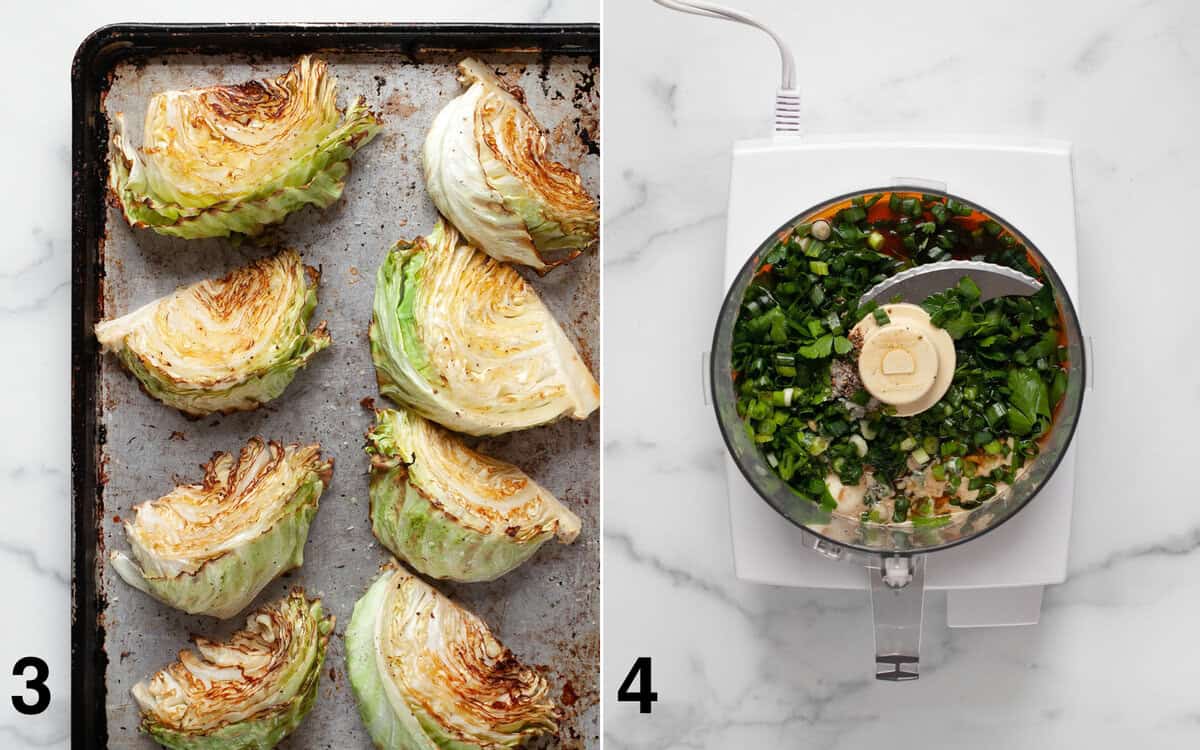
5. Puree the tahini sauce. You want it to have a pourable consistency, but not be runny. Add a little more water as needed.
6. Put the cabbage wedges on a serving plate. Drizzle them with the tahini sauce and garnish with sesame seeds and chopped parsley.
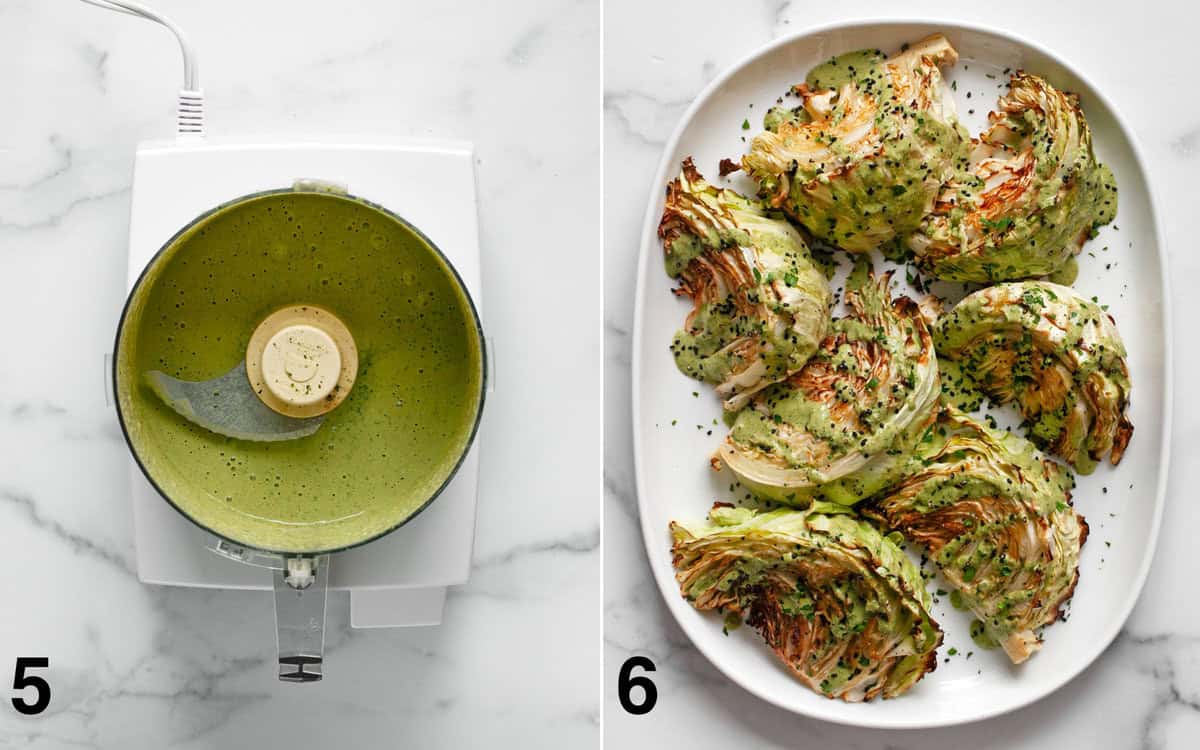
Serving
As mentioned, you can serve this roasted cabbage recipe as a vegan side dish or you can turn it into a main dish by pairing the wedges with cooked grains or lentils. The scallion tahini sauce is great with other roasted vegetables such as sweet potatoes, brussels sprouts, cauliflower, broccoli and butternut squash. This is where you can create a bowl with a base of grains and a cabbage wedge plus a mix of other roasted veggies.
Leftovers & Storage
Roasted cabbage is best eaten warm or at room temperature. You can store leftovers in an airtight container in the refrigerator up to 2 days. Keep the sauce in a separate jar. The cabbage will lose some of its crispy edges. I like chopping it and mixing it into a salad with other greens and leftover vegetables and grains.
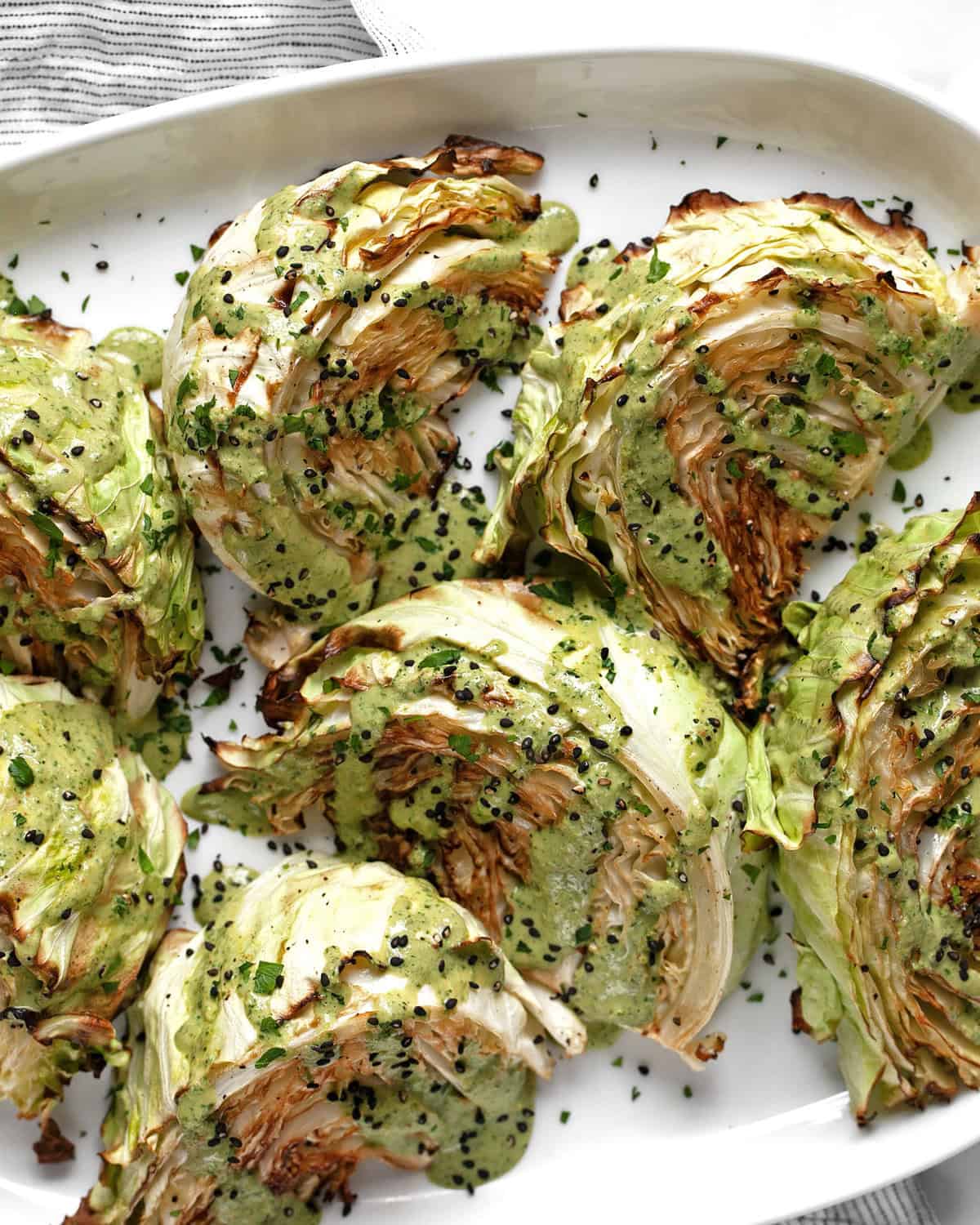
Recipe Tips
- Heads of green cabbage can vary in size from small to medium to large. If you do end up with a really big one, you may have to make more of the olive oil-rice vinegar mixture to brush on the wedges. Also, you might have to use a second sheet pan. Then rotate the baking sheets halfway through roasting when you flip over the cabbage.
- You don’t need to line the pan with aluminum foil or parchment paper. Oiling the pan will prevent the cabbage from sticking as well as brushing it before roasting.
- Allow the food processor to run for a couple minutes, so the sauce is fully combined. It will be pale green with darker green flecks throughout the mixture.
More Cabbage Recipes
Asian Cabbage Salad
Crunchy Apple Cabbage Salad
Cold Soba Noodle Salad
Sesame Ginger Noodles
Napa Cabbage Salad
Crispy Baked Tofu Salad
Savoy Cabbage Apple Salad
Red Cabbage Slaw
Roasted Cabbage Wedges
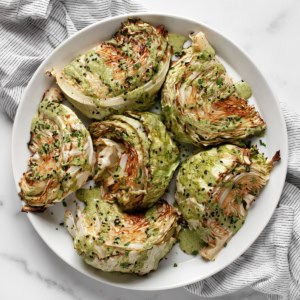
Ingredients
For cabbage
- 1 head green cabbage
- 2 tablespoons olive oil plus more for greasing pan
- 1 tablespoon rice vinegar
- Kosher salt and black pepper
For tahini sauce
- 1 garlic clove
- 1/3 cup tahini
- 1/3 cup parsley leaves
- 3 scallions, thinly sliced
- 1 tablespoon low-sodium soy sauce
- 1 lemon
- Pinch of kosher salt
- 1/4 teaspoon black pepper
- 2-3 tablespoons water
For serving
- 1 tablespoon sesame seeds
- 1 tablespoon chopped parsley
Instructions
- Preheat the oven to 400 degrees F. Lightly grease a sheet pan with olive oil.
- Tear the wilted outer leaves off the cabbage. With the cabbage stem side down, cut it in half. Then cut each of those halves into 4 wedges, so you end up with 8 cabbage wedges.
- In a small bowl, whisk 2 tablespoons olive oil and 1 tablespoon rice vinegar.
- Put the wedges on the sheet pan in a single layer without touching or overlapping. Brush the cabbage all over with the oil-vinegar mixture and sprinkle with salt and pepper.
- Roast the cabbage for 20-25 minutes until browned in spots and caramelized at the edges, flipping over halfway through roasting.
- For the tahini sauce, puree the garlic, tahini, parsley leaves, scallions, soy sauce, lemon juice, pinch of salt, 1/4 teaspoon pepper and water in a food processor or blender until combined and smooth. It should have a thick, but slowly pourable/spoonable consistency. Add a little more water as needed.
- Arrange the cabbage on a serving platter. Drizzle with the tahini sauce and sprinkle with sesame seeds and chopped parsley.
Notes
Nutrition
Nutrition information is automatically calculated, so should only be used as an approximation.

